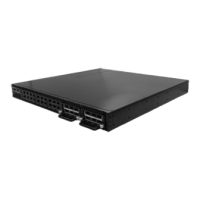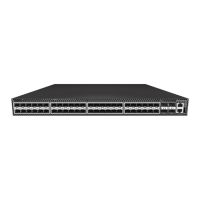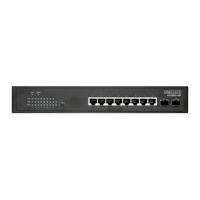Chapter 7
| Authentication Commands
User Accounts
– 212 –
User Accounts
The basic commands required for management access are listed in this section. This
switch also includes other options for password checking via the console or a
Telnet connection (page 142), and user authentication via a remote authentication
server (page 211).
enable password After initially logging onto the system, you should set the Privileged Exec password.
Remember to record it in a safe place. This command controls access to the
Privileged Exec level from the Normal Exec level. Use the no form to reset the
default password.
Syntax
enable password [level level] {0 | 7} password
no enable password [level level]
level level - Level 15 for Privileged Exec. (Levels 0-14 are not used.)
{0 | 7} - 0 means plain password, 7 means encrypted password.
password - Password for this privilege level. (Maximum length:
32 characters plain text or encrypted, case sensitive)
Default Setting
The default is level 15.
The default password is “super”
Command Mode
Global Configuration
Command Usage
◆ You cannot set a null password. You will have to enter a password to change the
command mode from Normal Exec to Privileged Exec with the enable
command.
◆ The encrypted password is required for compatibility with legacy password
settings (i.e., plain text or encrypted) when reading the configuration file
during system bootup or when downloading the configuration file from an FTP
server. There is no need for you to manually configure encrypted passwords.
Table 36: User Access Commands
Command Function Mode
enable password Sets a password to control access to the Privileged Exec
level
GC
username Establishes a user name-based authentication system at
login
GC

